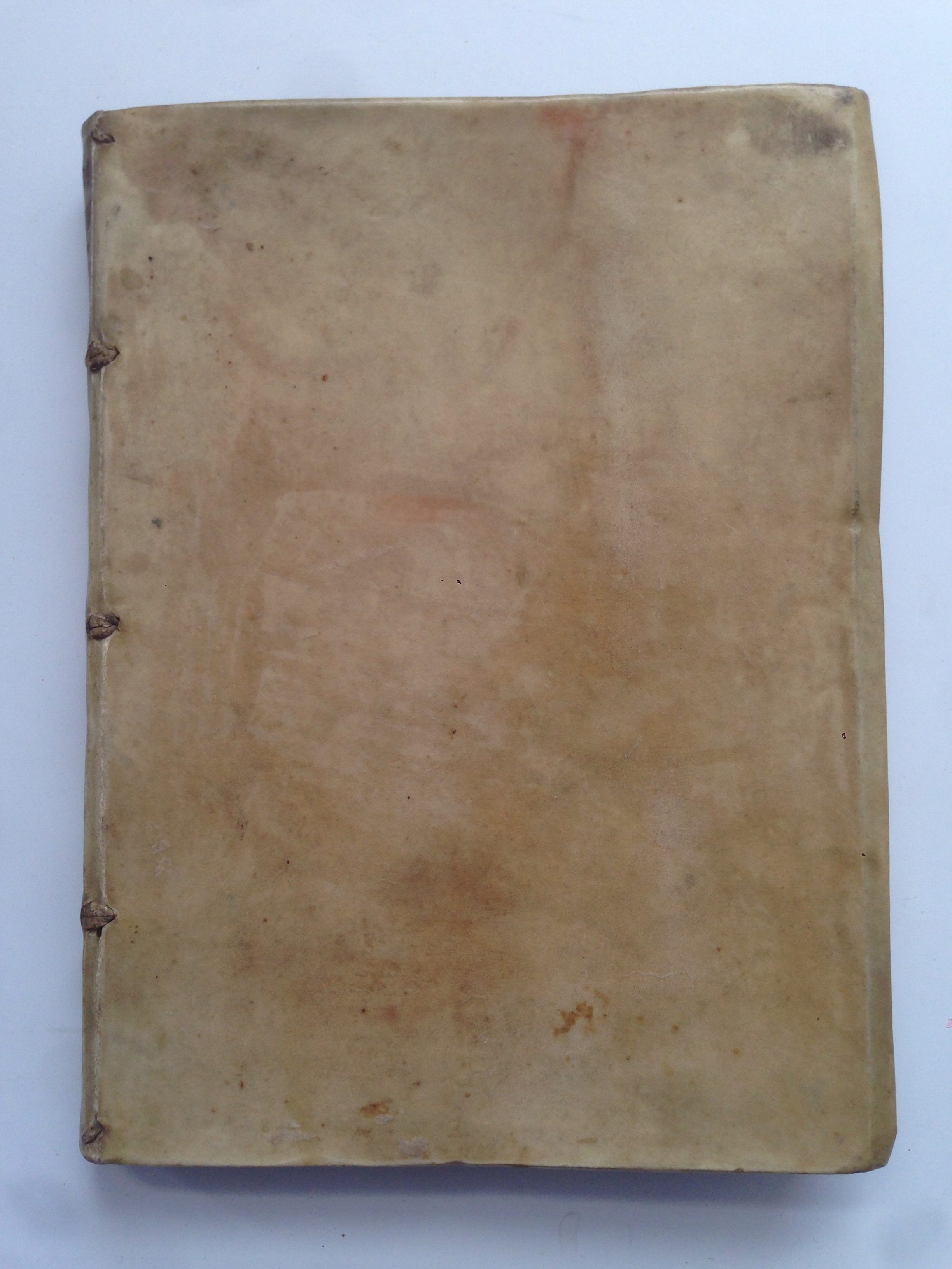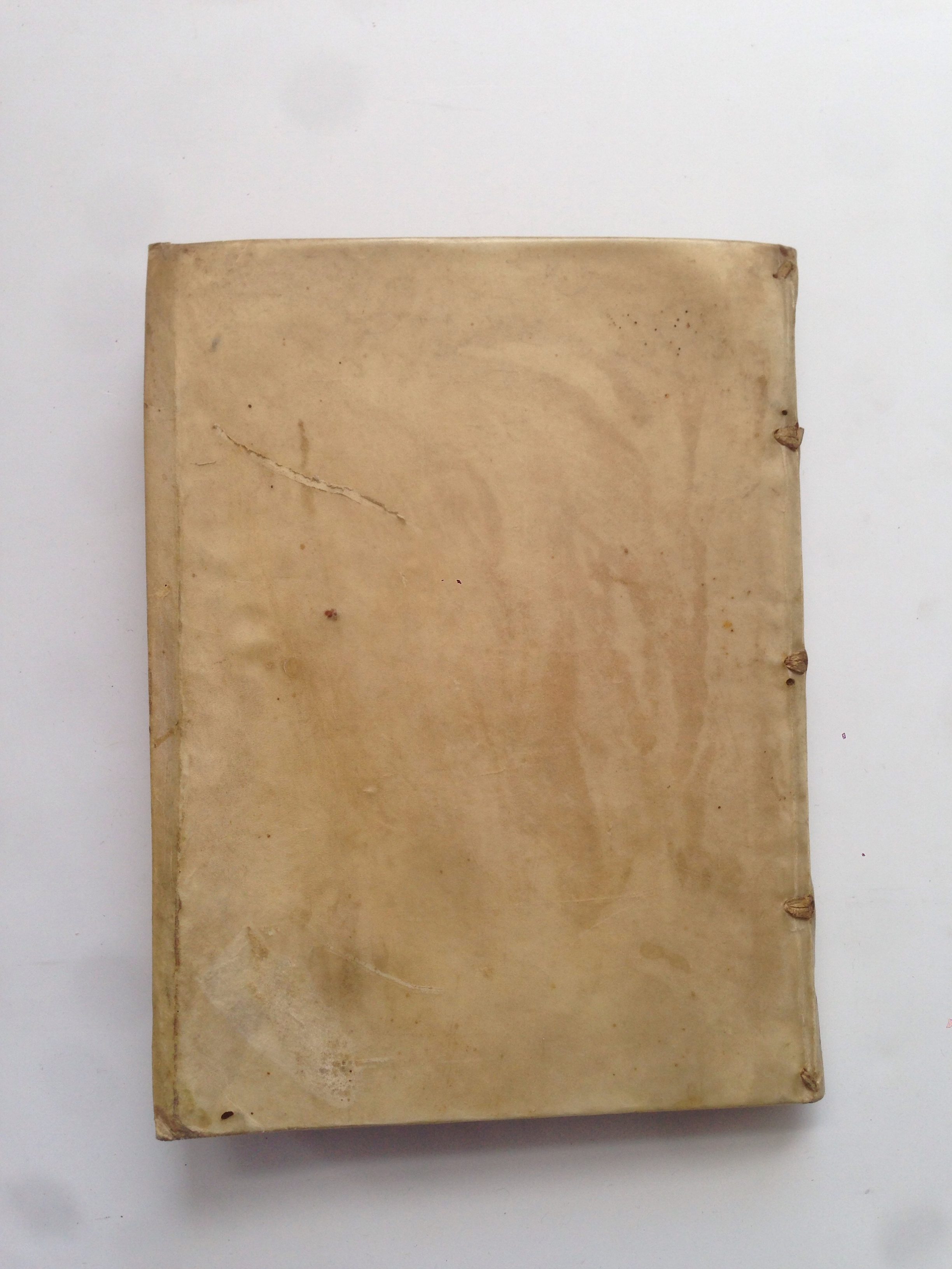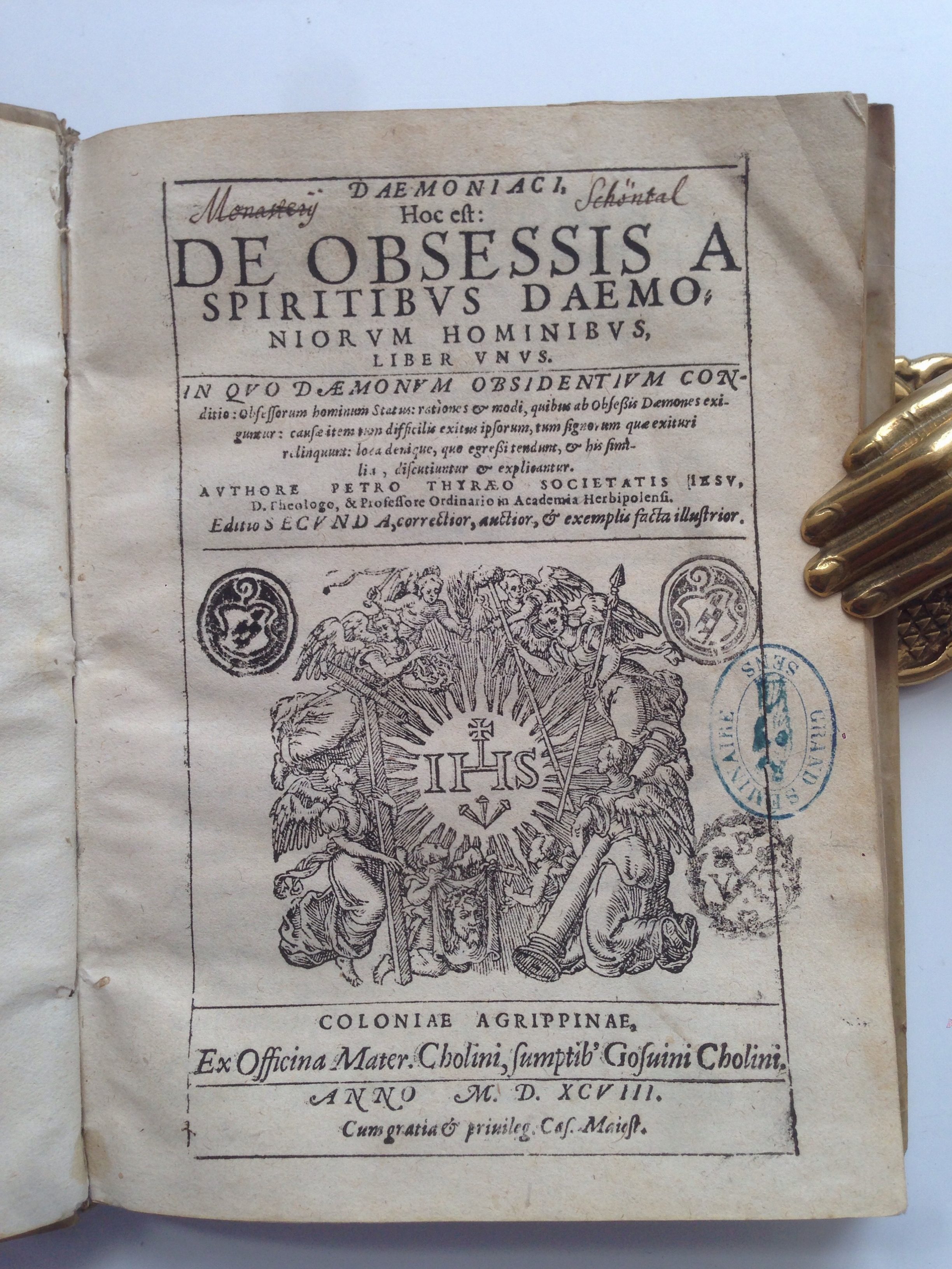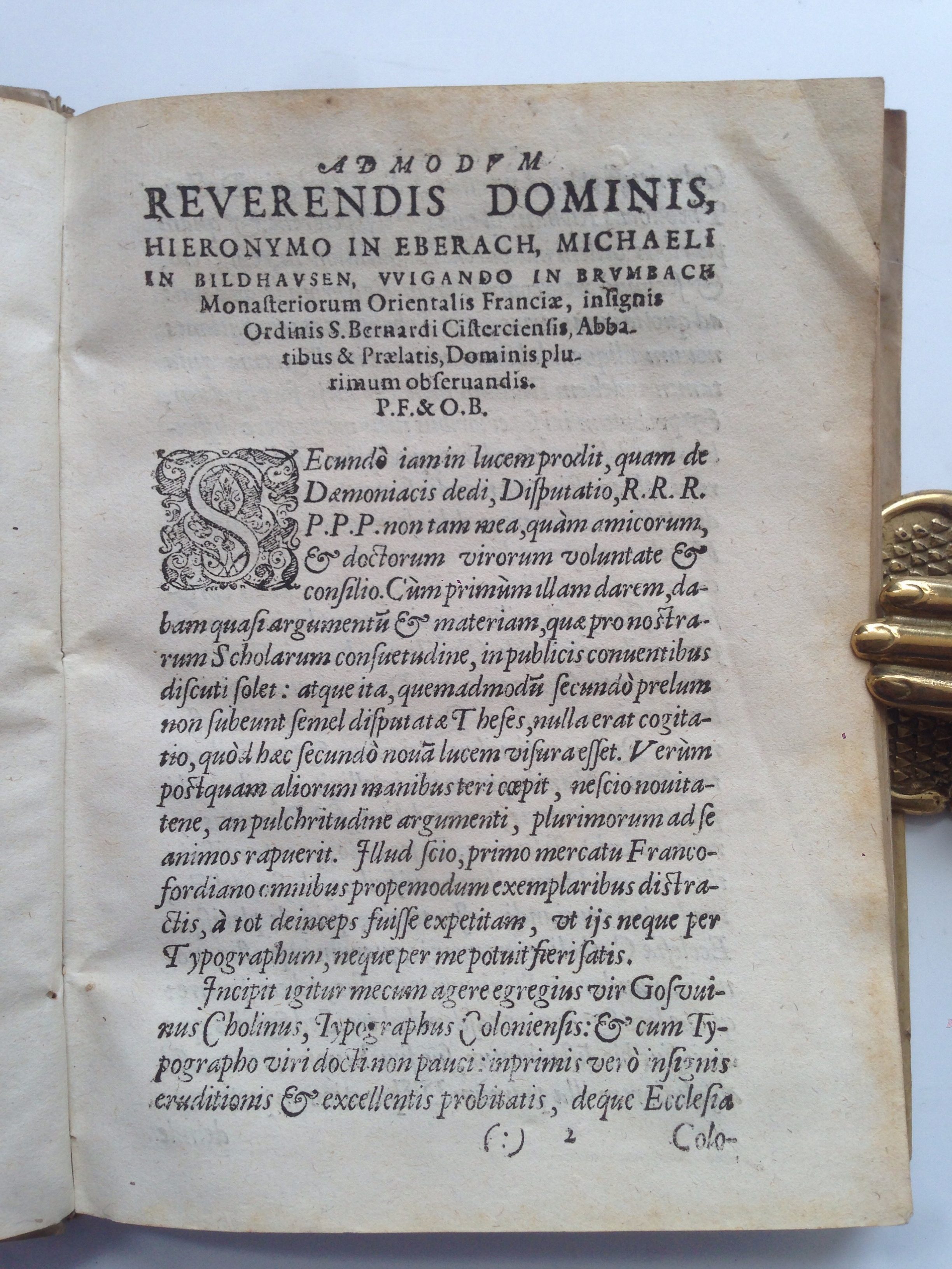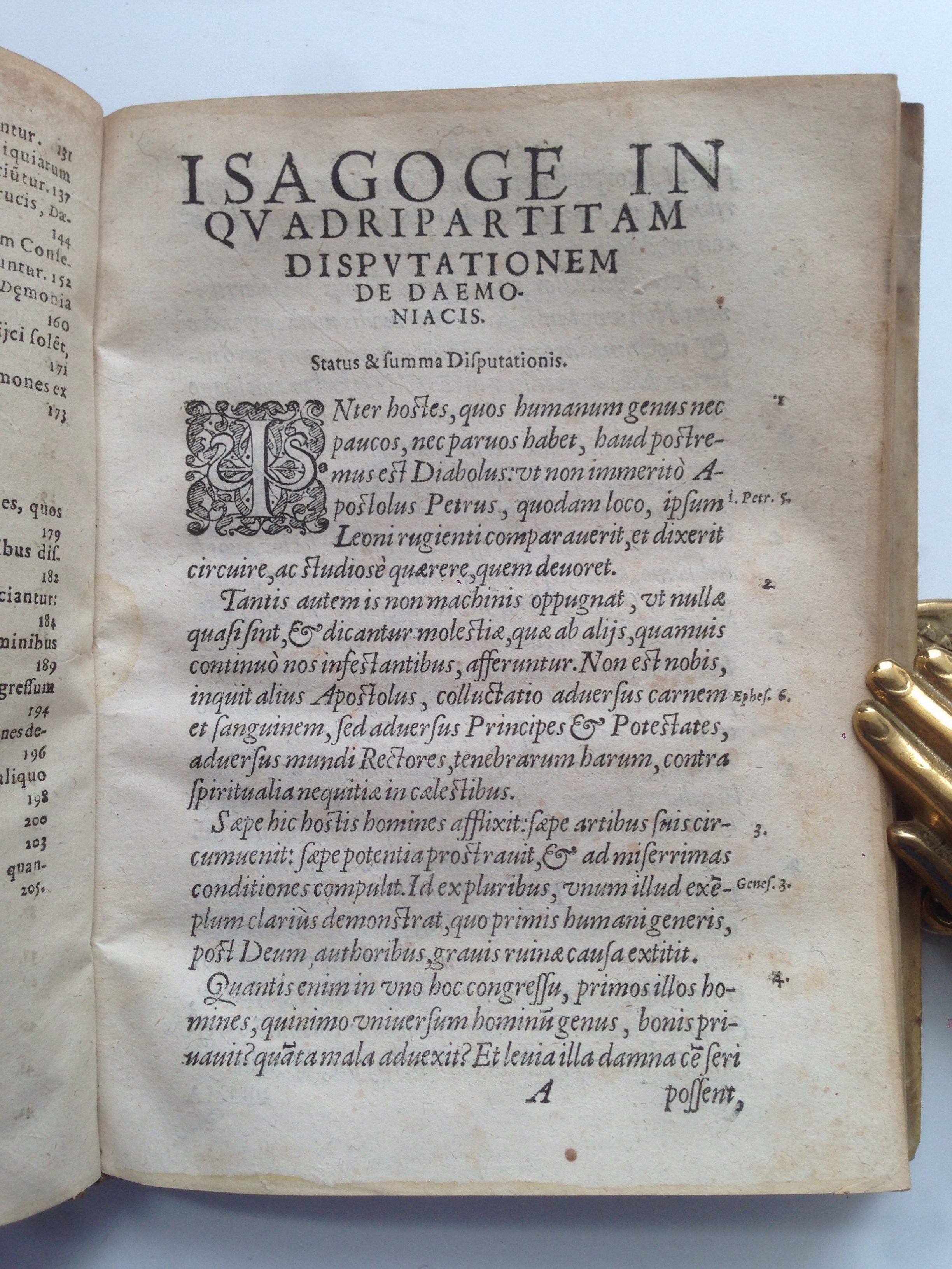THYRAEUS, Petrus
Daemoniaci, hoc est: De obsessis a spiritibus daemoniorum hominibus, liber vnus
Cologne, ex officina Mater. Cholini, sumptibus Gosuini Cholini, 1598£1,950.00
FIRST EDITION thus. 4to. pp. (xii) 207 (i.e. 203) , (i). (:) , 2(:)², A-2B , 2C². Roman letter, some Italic. Title within line border with large woodcut ‘IHS’ device, floriated woodcut initials, “Monasterii Schöntal” ms. at head of t-p in early hand, stamp of ‘Grand Seminaire de Sens’ on title (repeated on fly), another early armorial stamp, repeated above, small C19th stamp with crossed keys and monogram BVT below, bookplate of Eric Gruaz on pastedown. Age yellowing some browning in places with some minor spotting, occasional marginal mark or spot. A good, clean copy in contemporary vellum over thin boards, yapp edges.
Second, enlarged edition (the first appeared in 1594), of this demonological tract and handbook for exorcists. Petrus Thyraeus, born in Neuss (Rhineland), joined the Jesuits in 1561, and taught at Jesuit colleges first in Trier and then in Mainz. In 1590, he was appointed professor of theology at the University of Würzburg, and found a patron in Prince-Bishop Julius Echter von Mespelbrunn. He published a number of works on theology, visions and apparition, possessions and exorcism, and on traditional theological subjects such as the Eucharist and the role of the Catholic Church. Petrus Thyraeus concludes in this work that the visible, audible, and tangible phenomena associated with hauntings are hallucinations caused by demons or spirits. It inquires into the nature of demonic possession, its signs, how it occurs, whether witches, magicians, diviners, or heretics are possessed (usually not) whether the Church should be sought to exorcise them (he believed not); finally, he asks whether demons should be allowed to come out of a person if they so desire, and concludes that they should but only if such action is done to the glory of God. The Protestant Reformation and the Counter-Reformation of the sixteenth century gave occasion to re-examine many aspects of Catholic theology and practice, exorcism among them. As the Malleus malificarum of the fifteenth century was an attempt to establish a thorough and systematic definition of witchcraft in the fifteenth century, so in the sixteenth there was an effort to define possession and exorcism. The Daemoniaci is a fascinating example of these early efforts. It is said to be the first systematic attempt to define demonic possession and exorcism. Thyraeus lists a variety of demonic symptoms, like speaking in unknown languages and hungering for raw meat, but spends just as much time talking about what aren’t symptoms: leading an immoral lifestyle, having an unpleasant temperament, sleeping during the day, etc. His stated goal in writing the Daemoniaci was to make sure that people received proper treatment for whatever ailed them. Those suffering from what he calls a demonic “obsession” ought to receive exorcism, but those suffering from any number of other spiritual or physical problems ought to seek care elsewhere. For Thyraeus, the latter still meant seeing a priest, as he considered doctors to be quacks. Cf. Jennifer Lowe. ‘Driving out the Devil: Demons, Witches, and Magic in the Rare Book Collection.’
BM STC Ger. C16th. p. 862. Adams T697. Caillet 10687. Thorndike VII 368-9. DeBacker/Sommervogel VIII 15:15.In stock


